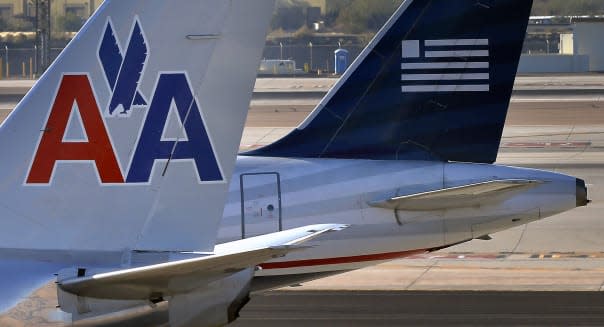U.S. Requests Stay in Fight Over US Airways, AMR Deal

The U.S. Department of Justice, which is fighting a proposed merger of US Airways Group and American Airlines parent AMR Corp., asked a judge Tuesday to postpone a trial in the case, saying the federal government shutdown would prevent its staff from working.
But a lawyer for the airlines said he expected the trial to determine if the government can stop the merger of US Airways and American Airlines to begin as scheduled in late November.
"From what the judge said in there, and I think everybody heard, we're going to trial on Nov. 25," Richard Parker said after a pretrial hearing. "We are planning on a Nov. 25 trial date."
Judge Colleen Kollar-Kotelly didn't mention a potential stay during the pretrial hearing Tuesday.
Shares of US Airways (LCC) were up 3.5 percent at $19.63 in midday trading Tuesday, while AMR (AAMRQ) rose 9.5 percent to $4.50.
The Justice Department had asked for the stay because of a government-wide shutdown that started Tuesday.
"This is creating difficulties for the Department to perform the functions necessary to support its litigation efforts," the department said in a court filing.
The Justice Department and several states sued Aug. 13 to stop the merger, saying the deal to create the world's biggest carrier would lead to higher fares and stifle competition.
Parker said a settlement resolving the fight was still possible. "We are interested in a reasonable settlement in this case," he said.
%VIRTUAL-article-sponsoredlinks%Any settlement would mean asset sales, which in turn would require approval from the judge overseeing American's emergence from bankruptcy.
The airlines have defended the deal in court filings, saying it would create $500 million in savings to consumers annually by creating a stronger competitor to Delta Air Lines Inc and United Continental Holdings Inc.
But the Justice Department has said the merger would be bad for consumers. Its complaint focused on Reagan National Airport, outside Washington, where the two carriers control a combined 69 percent of takeoff and landing slots. It also listed more than 1,000 different routes where, between them, the two airlines currently dominate the market.
The case at the U.S. District Court for the District of Columbia is No. 1:13-cv-1236.
%Gallery-183217%

